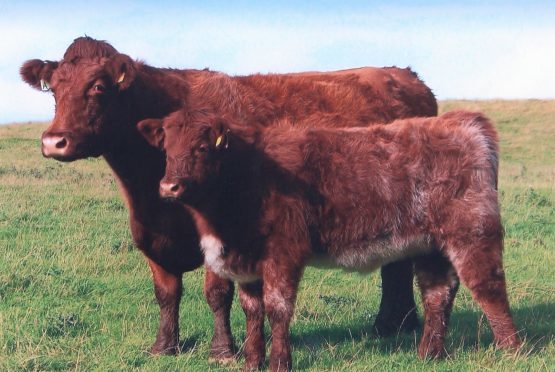A cattle breed with much to celebrate in 2016 is the Luing whose society is marking its 50th anniversary with a series of events including an open day on the west coast island where it all started.
While the annual sale is also now based at Wallets Mart, Castle Douglas, it is much farther north where the breed originates from.
The little island of Luing is roughly 15 miles south of Oban in the Inner Hebrides and is reached by the short ferry trip across Cuan Sound.
The island was farmed by the famous Cadzow family who also had farming interests in the Lothians, too.
Three brothers, Shane, Ralph and Denis, with their father James, had started to evolve the breed away back in around 1947 when they combined the strengths of two magnificent native breeds. These were the Shorthorn, which was a supreme fleshy beef animal, and the Highland famed for its hardiness and ability to thrive in adverse conditions.
In 1947 they selected some of the best first cross Highland/Shorthorn heifers and put them to a bull bred from the famous Cruggleton Shorthorn herd. Two resultant sons were kept and bred with their half-sisters, Luing Mist and Luing Oxo.
From then on the brothers followed this in-breeding with in-line breeding and after this Luing bulls were continually used with the breed remaining true to type for several generations. It was recognised as a new breed by the British Government in 1965.
The breed is praised for its extreme hardiness and good mothering ability making for easy management. However with Shorthorn blood infused through it, good meat-producing ability was also in the breeding.
When it was officially recognised the breed attached huge interest with an open day on Luing on 1966 attracting a large crowd.
Several innovative marketing ploys were thought up including Luing week in Oban when butchers, hotels and restaurants were encouraged to sell Luing beef.
The Cadzows had developed the breed for sound commercial reasons and in today’s climate of sustainable farming with low cost inputs the Luing is more and more relevant today just as it was back in 1966.
